Many thanks to SWLing Post contributor, Kostas (SV3ORA), for sharing the following guest post which originally appeared on his radio website:
How to install a mechanical SSB filter on the Yaesu FRG-7
by Kostas (SV3ORA)
The Yaesu FRG-7 is a general coverage MW/SW receiver that uses the Wadley Loop system for stabilizing the frequency tuning. The receiver has a good sound on AM mode, that reminds me the tube receivers sound. However, on sideband mode, it is pretty much useless. The IF ceramic filter that is used, does not have enough selectivity to reject the opposite sideband. No matter if the front panel mode selector switch states USB/CW and LSB, these just shift the BFO, nothing more. The receiver is a DSB set not SSB. A cheap way you can accomplish single signal sideband reception with the FRG-7 is described in this link. Whereas it works, it increases the audio bandwidth of the signals to the high pitch.
A better approach is to install an additional mechanical filter to the receiver. This of course requires expensive 455KHz mechanical filters, but if you have one in hand or if you are willing to pay for the improvement in performance, then this is the recommended option. But you can’t just desolder the ceramic filter of the receiver and solder a mechanical filter in place. On AM mode, you need wider bandwidth, but on SSB mode you need narrower. So both filters must be in place and a selection must be done in each mode. Thankfully, this modification is pretty easy on the FRG-7 and it does not require any modification of the external appearance of the radio.
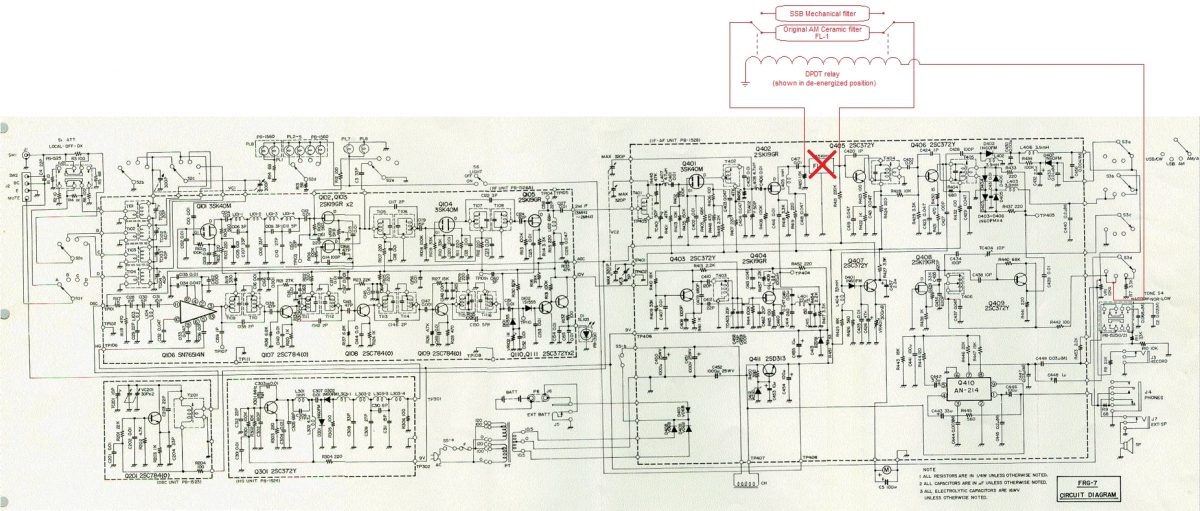 The schematic of the FRG-7 is shown above. Everything with red color, are part of the modification. The modification is pretty straight forward. You have to desolder the original ceramic filter from the FRG-7 PCB and install it on a separate PCB along with the new 455KHz mechanical filter. To select between the two filters, a 9-12v DPDT relay can be used and it must be connected as shown in the schematic. The power for the relay coil is derived from one section of the mode switch (S3d). On USB or LSB modes, the BFO is energized and this power is also used to energize the relay, which in turn switches to the narrow mechanical filter on these modes.
The schematic of the FRG-7 is shown above. Everything with red color, are part of the modification. The modification is pretty straight forward. You have to desolder the original ceramic filter from the FRG-7 PCB and install it on a separate PCB along with the new 455KHz mechanical filter. To select between the two filters, a 9-12v DPDT relay can be used and it must be connected as shown in the schematic. The power for the relay coil is derived from one section of the mode switch (S3d). On USB or LSB modes, the BFO is energized and this power is also used to energize the relay, which in turn switches to the narrow mechanical filter on these modes.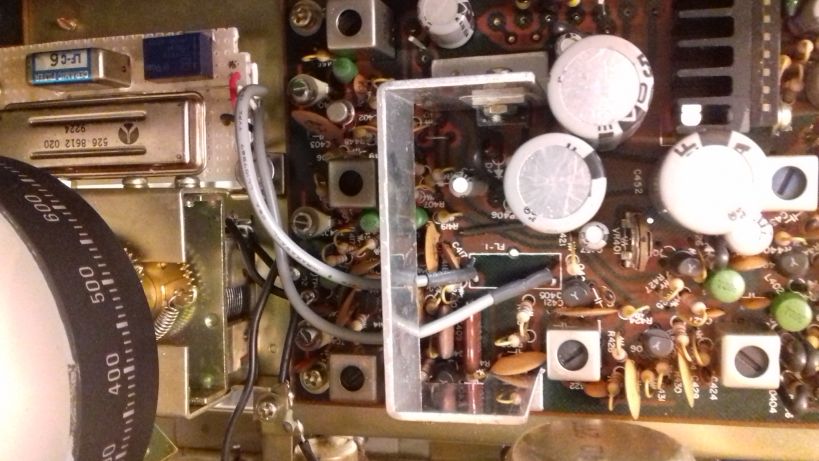
A good place for the new PCB that accommodates the filters, is just below the main tuning dial of the receiver. There is a hole there and three screws, which can be used to also hold this PCB in place. I needed to replace these screws in mine with longer ones, because I used spacers to prevent the PCB from touching the chassis. But this is optional.
Two small pieces of coaxial cables are used to connect the new PCB to the pads of the ceramic filter, that has been now removed from the original PCB of the receiver. Ground these cables on both ends.
The power cables for the relay coil (shown with red and black in the picture above), are passed below the PCB to the chassis opening and through a hole to the bottom of the original PCB of the receiver. The ground wire is soldered to the filter ground point and the red wire is soldered to the mode selector switch S3d. S3d is the outer wafer onto the switch. Use a multimeter to find the contact of the switch that has VCC when the mode is switched to USB or LSB. This is the point where you want to connect the red wire.
After installing everything, you should perform an alignment of the TC404 and the T406 in the BFO section as described in the manual. This requires a frequency counter, but I did my alignment by simply adjusting the two controls by ear, until I got roughly the same pitch on LSB and SSB audio bandpass. These controls interact, so you have to do a bit of back and forth in both of them. It is very easy.
After installing the modification and aligning the receiver, the result is pretty obvious. No more DSB reception, SSB signals are received just once in the dial and their bandwidth is limited as it should on SSB. The mechanical filter I had, was a bit narrow (2.1KHz) so I can also hear a bit os “seashell” sound on SSB, but SSB voice signals are perfectly understood. It is interesting that the audio volume between the ceramic filter and the mechanical filter was just about the same, which indicates that there is no additional loss in the newly installed filter. Another interesting thing is that there was no need for any impedance matching using active devices or transformers on the mechanical filter. It worked just by directly connecting it. Neither it’s loss, not it’s response seems to be affected by any possible impedance mismatches.
Note that Collins produced both symmetrical and asymmetrical mechanical filters (yes they used two filters, one for USB and one for SSB in some of their gear). My filter is a symmetrical one (same roll-off response curve on both sides of the filter passband). If you use an asymmetrical filter, expect a bit different pitch when switching from LSB to USB and vice versa. Not a huge problem, but just a note.
By performing this simple modification, you will end up with an FRG-7 receiver that is trully selective, allowing for real SSB reception. Most importantly you do not ruin the appearance of your precious FRG-7, but just improving it’s performance. This modification would probably be appreciated much when deciding to sell your FRG-7 to someone else.
Thank you for sharing this practical and affordable project with us, Kostas!
Post Readers: Check out this project and numerous others on Kostas’ excellent website.

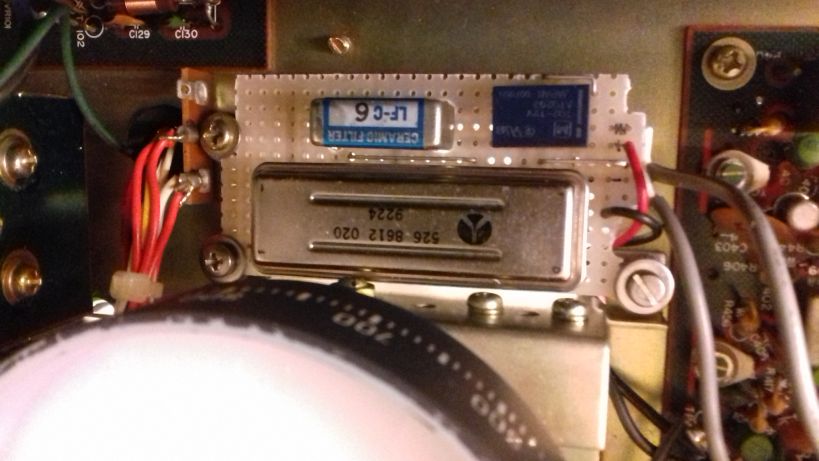
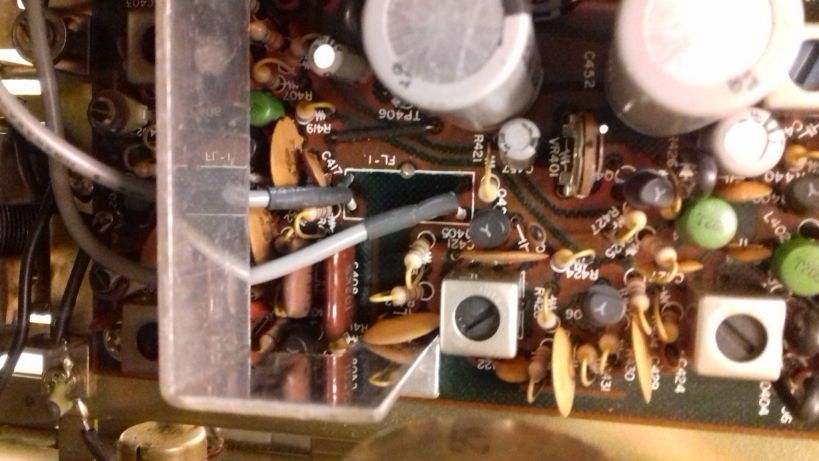
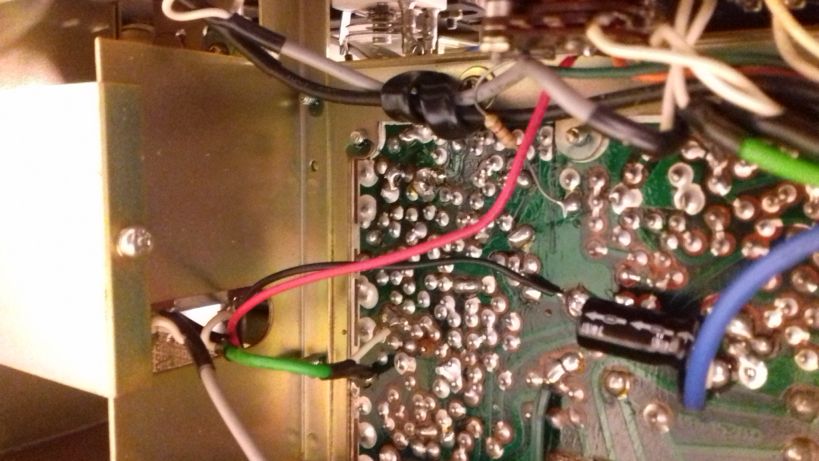
As for FRG-7 mods, a way to make fully reversible ones is to replace the back panel battery holder cover with a homemade one (and keep the original one in a safe place), that way, the replacement cover could be used to host connectors, switches and whatsoever and the space inside the receiver used for batteries could host additional boards (which may be screwed to the replacement cover); this will allow to easily reverse whatever mod and bring the FRG-7 back to original conditions 🙂
Very impressed with the engineering here along with the write up.
Great work…
but, please…
Don’t touch an FRG-7… as for the XCR-30, this receiver is a legend!!! There are so few item available in their original design that… please don’t modify them 😉
As far as I can see, it’s basically the equivalent of the “improved KIWA” filter mod that was a common dealer-fitted mod back in the 70’s/early 80’s when the FRG-7 was current/just superseded by the FRG-7000. The original KIWA mod required drilling a hole in the rear panel for a switch; the “improved” mod did the same as the OP & used switched voltage from the mode switch.
(The main differences I can see is that the “improved KIWA” mod I was familiar with used a transistor to switch the relay rather that operating it direct from the switched voltage, and used a slightly wider bandwidth filter. I forget if there was a reason for the former, and for the latter the OP admits his filter’s a bit narrow…)
Both were much-sought-after additions/improvements when the FRG-7 was current, so it’s not as if its ahistorical or anything, and at least the “improved” mod like this leaves no external signs & is easy to reverse. It’s also nowhere near as intrusive as drilling a hole on the front panel to add fine-tuning – which was also a common mod for the early FRG-7s that lacked it.
EXACTLY, this was my point, not to modify the FRG-7 in a way that it cannot be reversed.
Whatever mod I do, I do it without having to drill any holes, cut any traces or other destructive things like these. I respect these old equipment and I do not want to ruin them. I advise anyone that reads this thread to do so.
But because I do not want to just looking at them but do real HF work with them, I cannot tolerate the bad things on these machines. And the FRG-7 has a lot good but also a lot of bad things.
On AM mode it is really great, well apart from the non-effective noise blanker.
But on SSB mode it is useless. The ceramic filter is only good for DSB and the BFO drifts a lot until it is heated for good.
The modification described in this article takes care of the first problem for good, without ruining the equipment. The Kiwa mod you describe was a bad mod if it required you to drill holes! This is where real thinking amateurs are distinguished from amateurs with “screwdrivers”. It is so simple to add selectivity to the FRG-7 without adding any holes, you just have to look and understand the schematic!
Another reason I decided to share the mod, was that I could find people that were talking for the Kiwa mod, but no one would tell you how to install an additional filter properly if you did not have their parts. I am amazed it worked without having to introduce any impedance matching circuits. And the volume is the same as in AM mode, so no big loss in the mechanical filter.
Now I have to fix the badly drifting BFO problem and this problem becomes more pronounced if you install this narrow filter on SSB. The solution is quite easy, and again it does not require any desoldering or ruining the receiver. It will provide a rock solid BFO and then the receiver will be compared to the rock solid HAM radio transceivers of the era. I will share the mod, when finished, cause what’s the point of doing something if others can’t reproduce it?
Yeah, drilling that hole was my problem with the KIWA mod. As far as I know that’s why someone came up with the ‘improved KIWA’ mod – well, that, and KIWA at the time insisted you ship your receiver to them for the mod, which was an expensive proposition from Australia 😉
Not surprised the impedance match at that point isn’t really an issue – from memory of the circuit, it’s pretty non-critical between that 3nd mixer & IF amp (but it’s been a while since I really looked at it).
I’m interested in seeing your “quite easy” mod to stabilise the BFO. Again without looking at the circuit, I don’t recall that there was much that could be done with the existing oscillator.
Even Yaesu modified the FRG-7, Davide. The fine tuning control was not featured on early units. in addition, Yaesu moved the power transformer from the bottom of the chassis to the top, and changed the headphone jack from 3.5mm to 6.35mm.
I have made a number of mods to my FRG-7s, the most noteworthy being replacing the original IF filter to a narrower one. This has made these receivers for useful to me. But, don’t worry – I won’t touch your FRG-7.
And the mods were made because people were using the receiver.
People curse that sort of thing now because they are collecting, and want pristine. It may be different now, but if people are using it, the mod may mean they continue to use it. That trumps sitting on a shelf.
The groping really comes because people now see collection, and attrition has reduced available units. But often they seem to forget that some things, like surplus, were a near endless supply, and cheap. And it you didn’t modify them, they were less useful.
A modified receiver only matters to others if it goes on the market again.
And in fact the fine tuning mod they did, was a bit useless alone. The tuning range is too much for SSB. You should install a small NP0 capacitor in series with the fine tune variable capacitor if you want the range to be usable on SSB. I have done this mod here http://qrp.gr/frg7finetune/
The capacitor must not need too small and the range depends on the main tuning dial setting. I found the value described in the video to be a good compromise.
Please see my reply below, whatever mod I do, I do it without having to drill any holes, cut any traces or other destructive things like these. And I advise anyone to do so, as not to ruin the old equipment.